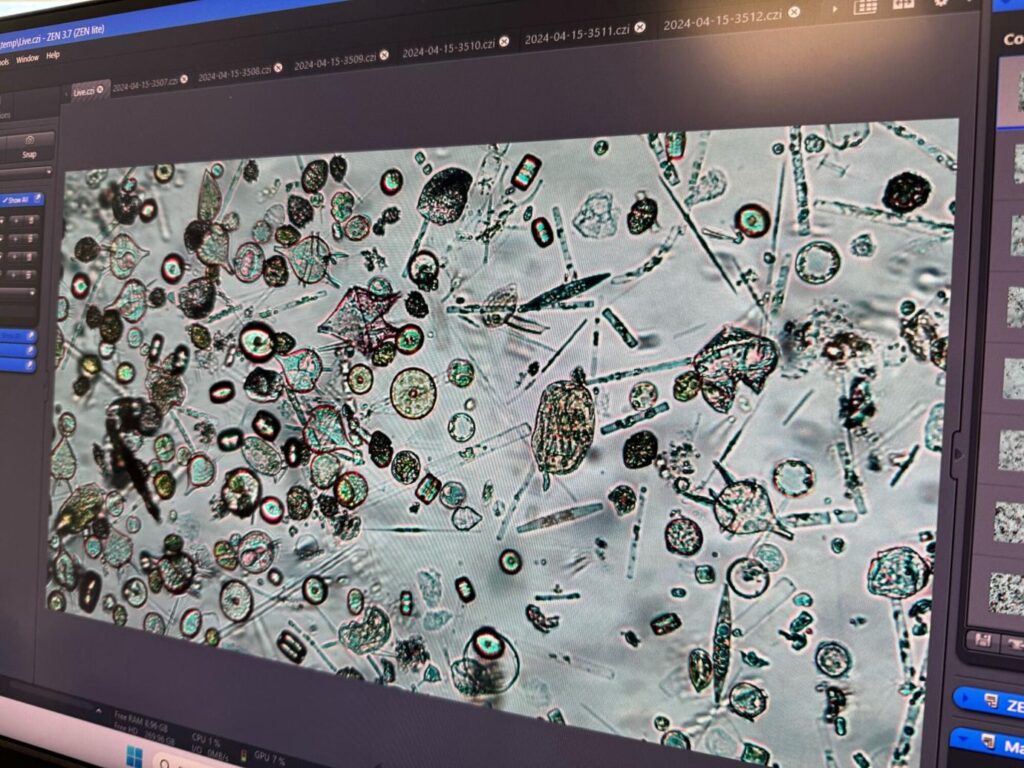Get in touch
We would love to hear your suggestions.
Traversing European Coastlines
An expedition to study coastal ecosystems and their response to the environment, from molecules to communities
The coastal sediments lining Europe’s shores hold a hidden archive of microbial biodiversity, past and present. As part of the TREC expedition’s pan-compartment approach, scientists collected sediment samples from a wide range of coastal sites across the continent. Leading this work is Raffaele Siano, a marine ecologist based at the French Institute for Ocean Science (Ifremer) in Brest, France.

Few stretches of Europe’s coastline remain untouched by human activity – but in most cases, we don’t actually know what these ecosystems were like before those impacts began. Some answers lie in ocean water, but because it changes rapidly with tides and currents, and plankton records rarely go back more than a few decades, studying the water alone doesn’t provide the full picture. That’s where sediments – and the sediment compartment – come in.
Sediments are both a vital habitat for marine life and a memory bank of the coastal environment. Over time, they accumulate DNA, organic and inorganic pollutants, and other particles from land and sea, creating a long-lasting archive. Scientists can use this record to trace when certain substances appeared, how biodiversity has changed, and even how landscapes have shifted.
This helps us ask key questions: Is the pollution we see today the result of a single event, or has it been building up for decades? Has biodiversity declined steadily, or fluctuated over time? What were these ecosystems like before major human influence – and are those changes reversible?
Understanding what ecosystems looked like in the past puts us in a stronger position to guide recovery, and to manage coastal environments in ways that are sustainable and grounded in long-term evidence.
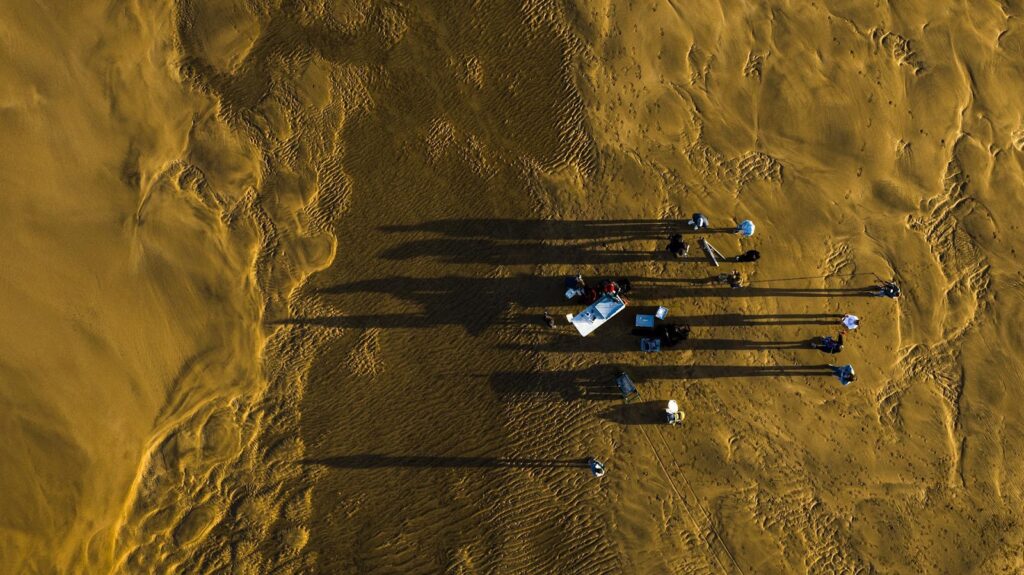
Understanding what ecosystems looked like in the past puts us in a stronger position to guide recovery, and to manage coastal environments in ways that are sustainable and grounded in long-term evidence
It took shape during TREC’s first preparation meeting in Paris, when I met Paola Bertucci, EMBL’s Head of Scientific Expeditions. Paola was in Paris to work with TREC’s core partner, the Tara Ocean Foundation, and we met for the first time in person to discuss TREC: it was at that moment we first discussed the overall sampling strategy of the expedition.
We spread our initial ideas out on the floor and sketched them onto a sheet of paper. Paola kept that first drawing, and I was genuinely moved when she included it in a slide during the first TREC symposium in 2024. It was an emotional moment for both of us, sharing a small but important and great memory that marked the concrete beginning of our pan-compartment TREC sampling strategy.
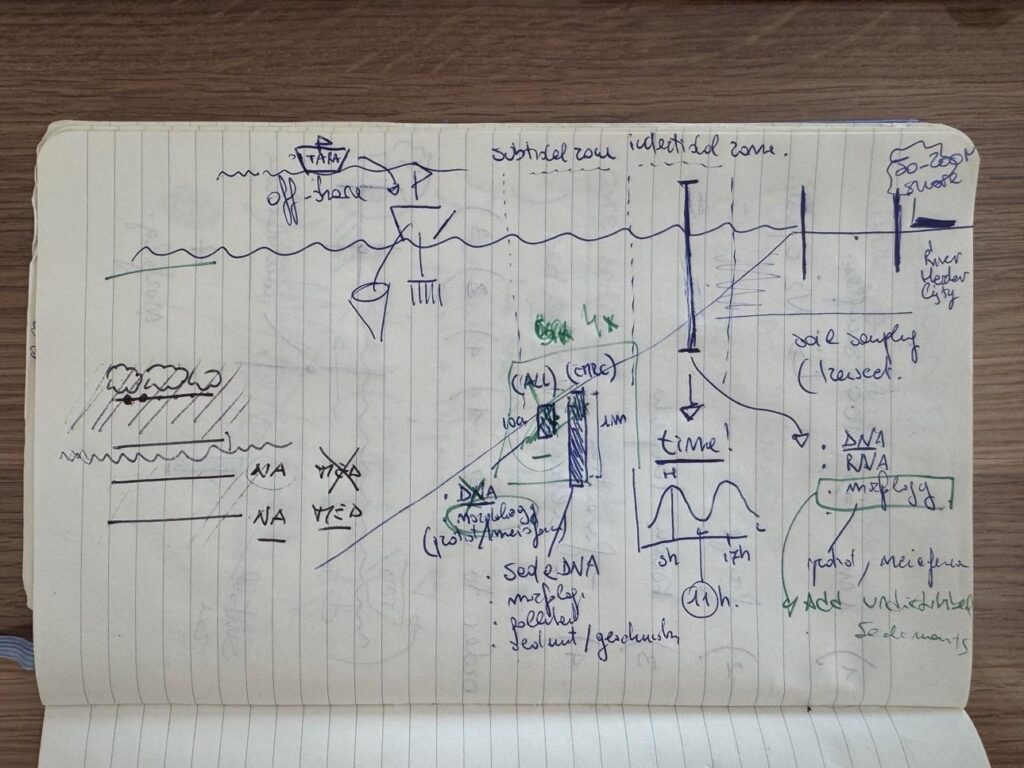
During the TREC expedition, we collected two types of sediment samples: surface sediments, which offer a snapshot of present-day conditions, and deeper paleocores – long cylinders of sediment that record environmental changes going back decades or even centuries.
We developed a dedicated sampling protocol and followed strict procedures to avoid contamination. Both methods used coring techniques: surface samples captured the top few centimetres, while paleocores used longer tubes to reach layers up to a metre deep. The surface sediments were taken at all TREC sampling sites, 115 places all over Europe. Taking paleocore samples is more resource intensive, so for this we selected 15 coastal sites on the TREC journey across nine countries, based on their varied histories – ranging from harbours and agricultural zones to volcanic regions and former warzones: we collected more than 120 paleocores, which we then divided up centimetre by centimetre, totalling more than 10,000 individual samples.


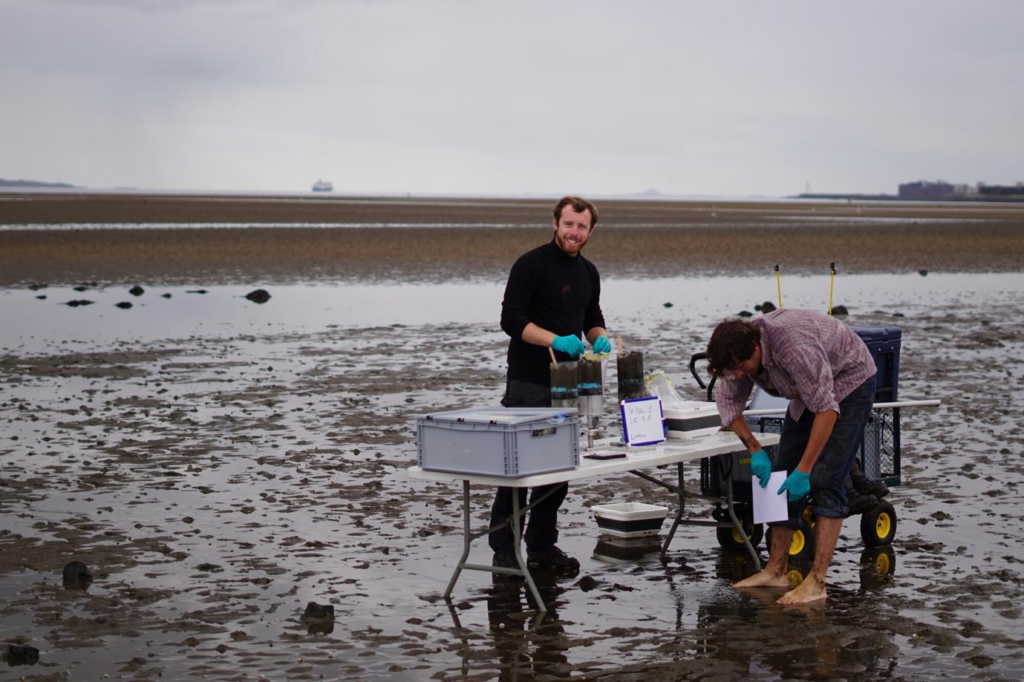
What makes TREC unique is that we’re not studying one compartment in isolation. By linking data from water, sediment, and land, we can explore how these systems interact. What moves from land to sea? What gets trapped in sediments or suspended in water? Are aerosols carrying materials between ecosystems? This kind of holistic, multidisciplinary approach is still relatively new, but it offers a powerful way to understand how materials and organisms move across compartments and how ecosystems evolve over time.
Ecology has traditionally been rather compartmentalised – some groups studying water, others studying land, and so on. But TREC brought these perspectives together, using shared protocols, common ideas, and coordinated methods.
Another exciting aspect is the scale of the TREC project. In the past, this kind of sampling was usually done in a single bay or along a small stretch of coastline. It was difficult to tell whether what we observed was local or part of a broader pattern. But TREC covered large portions of the European coastline and a wide range of ecosystems. Now we can ask: is what we see in Finland similar to what’s happening in Greece? Are patterns on the French coast mirrored in Norway?
TREC was a truly European effort. In our Paleocore project alone, we’ve brought together more than 50 collaborators from 18 institutes across Europe. And because the sampling and methods were consistent across sites, we can now compare them properly – for the first time gaining a continent-wide view of coastal microbial biodiversity.

What makes TREC unique is that we’re not studying one compartment in isolation. By linking data from water, sediment, and land, we can explore how these systems interact
My father passed away while I was working on the TREC expedition. When I learned he had died, my teammates were incredibly supportive – they suggested we go out and sample together. Being in the field, doing the work with others, gave me the strength to carry on until I could return home to be with my family. It was a very sad time, but it showed me how important this project, and these people, had become to me.
Another powerful memory comes from working on the paleocores. Some of our samples went more than a metre deep, and each core was divided into one-centimetre layers, so a single core could yield up to 100 samples. Every time we processed one, a team worked side by side for up to twelve hours straight. It was long and demanding, but whether it was a senior scientist or a volunteer helping for the day, everyone pitched in. Those helping hands made a huge difference. From France to Finland, Germany to Greece, I saw the same passion and the same commitment to our shared goals.
TREC has been one of the best experiences of my life – both scientifically and personally. Working closely with colleagues from EMBL and other partners, sharing responsibility, facing challenges together – it created strong bonds. It’s those human connections I made during TREC that I’ll remember most.
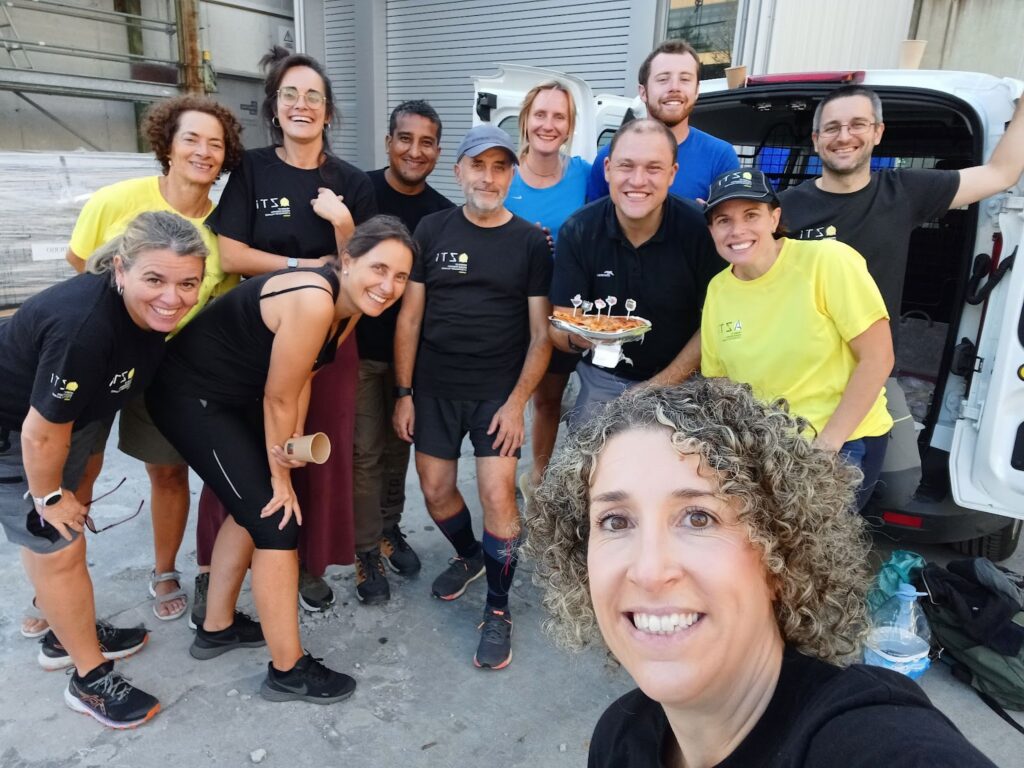
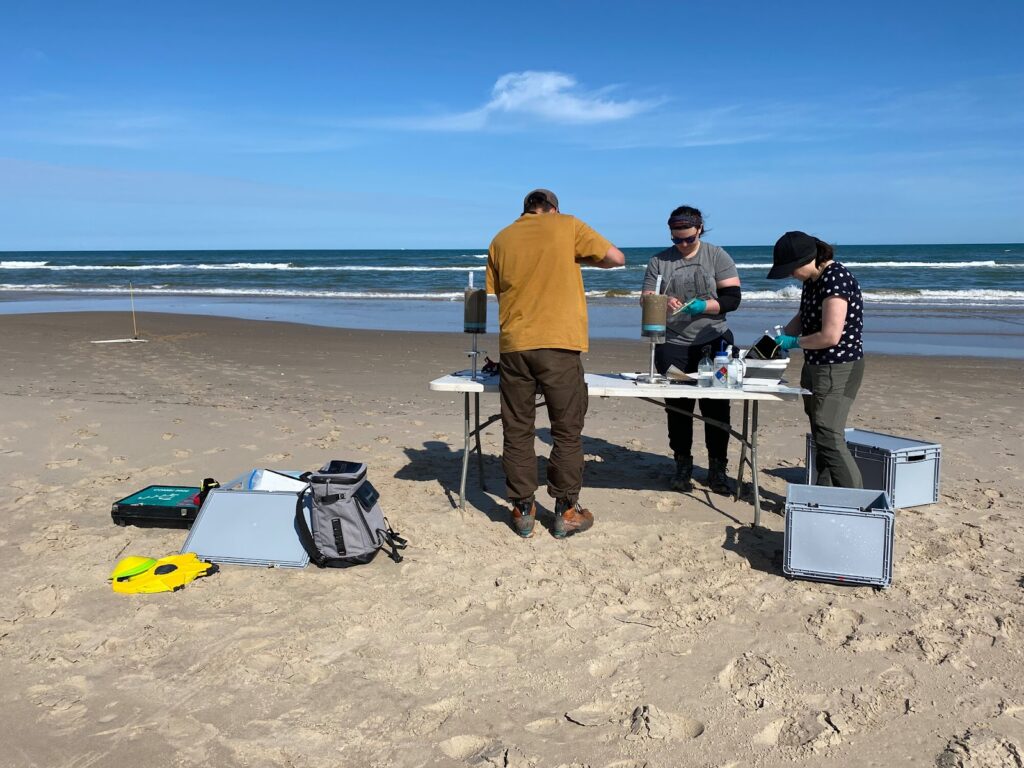
My father passed away while I was working on the TREC expedition. When I learned he had died, my teammates were incredibly supportive – they suggested we go out and sample together. Being in the field, doing the work with others, gave me the strength to carry on until I could return home to be with my family. It was a very sad time, but it showed me how important this project, and these people, had become to me
It really came from combining different parts of my background – taxonomy and ecology on one side, molecular biology on the other. I realised that molecular tools could open up new ways to study ecological systems. When I started working with plankton and time series data, it quickly became those records had some major limitations from a historical perspective. Most don’t go back far enough to understand the long-term effects of human activity on microbial communities. To answer the questions I was interested in, I kept coming back to the idea that we needed to look further into the past.
One example is a study my group did in the Bay of Brest, in France, which showed that microbial biodiversity changed dramatically and irreversibly after the Second World War due to wartime pollution. Another comes from work we carried out in New Caledonia, where we studied the effects of nickel mining. During the peak of mining activity, microbial biodiversity dropped by around 40%. That kind of alarming information is buried in sediment – but only if you go looking for it.
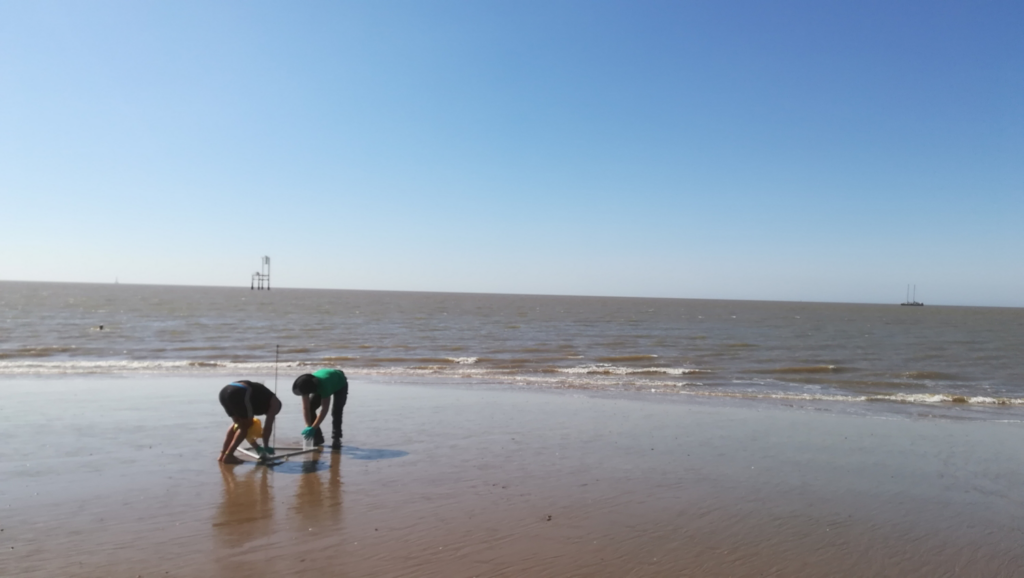
I’m originally from Naples, on the Italian coast, and as a child I used to swim with a mask and snorkel, always curious about what I could see beneath the surface. I was fascinated by animals, by nature – by everything around me, really. I didn’t grow up dreaming of becoming a scientist exactly, but that kind of curiosity, I think, is at the heart of science.
If you’d asked me as a child, I’d probably have said I wanted to study whales or dolphins. But I ended up working with plankton, almost by accident. During my master’s, I was offered an internship with a group studying plankton, and I took it. I still remember the first time I looked at marine microorganisms under a microscope, I was completely amazed. It felt like discovering a hidden world. I went on to spend the next ten years working with microflora. So, my path wasn’t planned, but once I found my focus on the microbial world, I never looked back.
